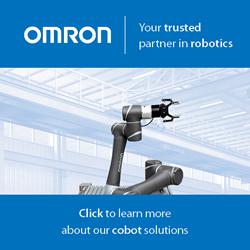Mobile Industrial Robots (MiR) Launches MiR Finance - a "Robot as a Service" (RaaS) Leasing Program
North American Robot Orders Down Slightly in First Quarter 2019
Omron Helps University of Houston Engineering Students Gain Real-World Skills with New Design and Robotics Laboratory
SCARA Robots - The Next Move in Automotive Sector; Towards the Automation!
The cornerstones of Zimmer Group's Industry 4.0 success in production
Youth Robotics Teams Inspire Record Crowds at FIRST® Championship in Houston
OUTLOOK on World Robotics Report 2019 by IFR
Boston Dynamics Handle Robot Reimagined for Logistics
Automate Announces 2019 Launch Pad Startup Competition Finalists
Ryder Redefines the Smart Warehouse; Deploys Innovative Mix of Startup Technologies
OMRON Showcases The Harmony Between Humans And Machines With The Largest, Most Advanced Interactive Exhibit Of AI, Robotics & Automation At CES 2019
Mobile Robotics Software Market to exceed USD 3.5 Billion by 2024
Universal Robots Celebrates 10 Year Anniversary of Selling the World's First Commercially Viable Collaborative Robot
Universal Robots hires more than 20 former Rethink Robotics employees
ABB to Build the World's Most Advanced Robotics Factory in Shanghai
Records 286 to 300 of 435
First | Previous | Next | Last
Factory Automation - Featured Product

